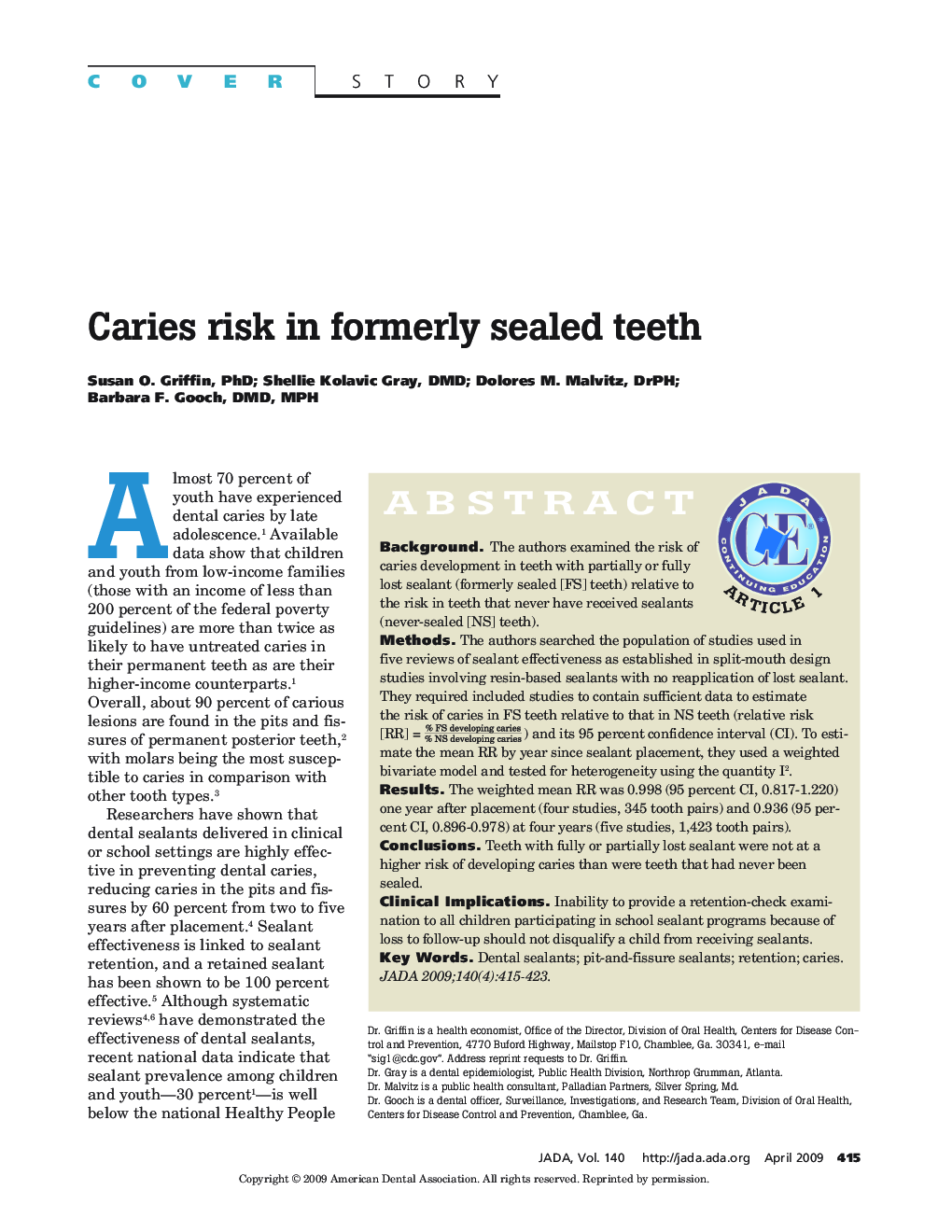| Article ID | Journal | Published Year | Pages | File Type |
|---|---|---|---|---|
| 3139832 | The Journal of the American Dental Association | 2009 | 9 Pages |
ABSTRACT BackgroundThe authors examined the risk of caries development in teeth with partially or fully lost sealant (formerly sealed [FS] teeth) relative to the risk in teeth that never have received sealants (never-sealed [NS] teeth).MethodsThe authors searched the population of studies used in five reviews of sealant effectiveness as established in split-mouth design studies involving resin-based sealants with no reapplication of lost sealant. They required included studies to contain sufficient data to estimate the risk of caries in FS teeth relative to that in NS teeth (relative risk [RR]=% FS developing caries% NS developing caries) and its 95 percent confidence interval (CI). To estimate the mean RR by year since sealant placement, they used a weighted bivariate model and tested for heterogeneity using the quantity I2.ResultsThe weighted mean RR was 0.998 (95 percent CI, 0.817–1.220) one year after placement (four studies, 345 tooth pairs) and 0.936 (95 percent CI, 0.896–0.978) at four years (five studies, 1,423 tooth pairs).ConclusionsTeeth with fully or partially lost sealant were not at a higher risk of developing caries than were teeth that had never been sealed.Clinical ImplicationsInability to provide a retention-check examination to all children participating in school sealant programs because of loss to follow-up should not disqualify a child from receiving sealants.
